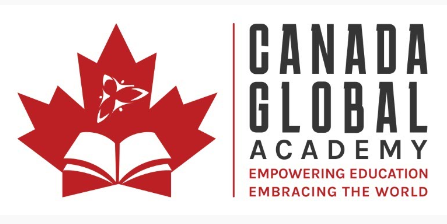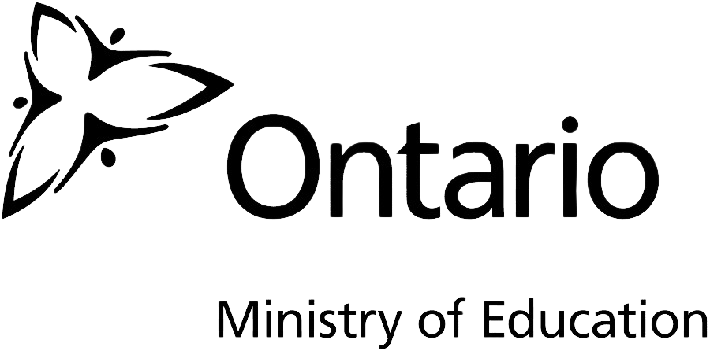Are you curious about how to create a curriculum that meets the needs of every student while maintaining academic standards? Balancing the diverse learning requirements of students with the necessary educational expertise can be a complex task. But fear not, we have the answers you seek.
At Canada Global Academy, we understand the importance of a world-class curriculum that caters to individual needs. Our experienced team of educational experts has mastered the art of curriculum development, ensuring that academic knowledge is delivered effectively to all students.
We believe that a curriculum should be a comprehensive and equitable learning experience for every student. It should go beyond a one-size-fits-all approach and consider the unique needs, interests, and abilities of each learner. But how can we achieve such a delicate balance?
In this article, we will delve into the key principles behind crafting a curriculum that unlocks the potential of every student. From understanding the relevance of curriculum content to embracing diversity and inclusivity, we will explore the essential considerations in curriculum development.
So, if you’re ready to discover how to create a world-class curriculum that caters to individual needs while upholding academic standards, read on!
Key Takeaways:
- Educational expertise is crucial in developing a curriculum that balances standards with individual needs
- The relevance and significance of curriculum content directly impact student engagement and understanding
- Coherence and balance in curriculum content enhance students’ holistic learning experience
- Diversity and inclusivity in curriculum content create a welcoming and equitable educational environment
- Authenticity and developmental appropriateness of curriculum content foster practical application and growth
Understanding the Relevance of Curriculum Content
When it comes to selecting curriculum content, relevance is a crucial criterion that cannot be overlooked. The content chosen must directly align with the goals and objectives of the curriculum, ensuring that it matches the intended learning outcomes. Additionally, it is essential to consider the unique requirements of students, including their age, grade level, and prior knowledge.
Utilizing effective instructional strategies is key to engaging students and supporting their understanding and application of concepts within their educational setting. By incorporating instructional strategies backed by educational research and pedagogical expertise, educators can create a learning experience that resonates with students and maximizes their learning potential.
Instructional strategies refer to the techniques and methods used to deliver content in a way that captivates students’ attention and facilitates their comprehension. These strategies can include interactive activities, multimedia presentations, group discussions, and hands-on experiments.
Instructional strategies play a significant role in fostering a dynamic learning environment that caters to the diverse needs of students while promoting their active participation and deep understanding of the curriculum content.
Educational research informs the selection of appropriate content and instructional strategies based on empirical evidence and best practices. It provides valuable insights into how students learn, retain information, and apply knowledge. By staying abreast of the latest findings in educational research, educators can make informed decisions about the curriculum content that will be most effective in achieving desired learning outcomes.
Pedagogical expertise is the culmination of knowledge, skills, and experience that educators possess in the field of teaching and learning. It involves applying theoretical frameworks and practical insights to design and deliver instruction that meets the needs of diverse learners. Pedagogical expertise informs the selection of curriculum content that is meaningful, engaging, and developmentally appropriate.
Why is Understanding the Relevance of Curriculum Content Important?
Understanding the relevance of curriculum content is crucial for several reasons. Firstly, it ensures that students are presented with material that is directly connected to the goals and objectives of their education. This alignment enables students to see the purpose and value of their learning, enhancing their motivation and engagement.
Additionally, relevant curriculum content supports students in transferring their knowledge and skills to real-life contexts. By incorporating content that resonates with students’ experiences and interests, educators can bridge the gap between the classroom and the world outside, making learning more meaningful and applicable.
Ultimately, understanding the relevance of curriculum content empowers educators to create a learning experience that is both engaging and effective, fostering students’ growth, curiosity, and lifelong love for learning.
| Benefits of Understanding the Relevance of Curriculum Content |
|---|
| Enhanced student engagement and motivation |
| Facilitated transfer of knowledge and skills to real-life contexts |
| Increased connection between classroom learning and students’ experiences |
| Improved retention and application of learned concepts |
Significance of Curriculum Content

The content selected for the curriculum plays a crucial role in shaping students’ educational journey. It should be significant in terms of importance and impact, incorporating key concepts, theories, principles, and abilities that form the foundation of the subject area.
By integrating such significant content, educators provide students with a solid comprehension of the subject matter, equipping them with the necessary skills and knowledge for future exploration and application.
The significance of curriculum content goes hand in hand with the pursuit of academic excellence. When students receive comprehensive and well-rounded instruction, they are empowered to reach their full potential and achieve remarkable feats.
“Academic excellence is not just about achieving exceptional grades; it’s about nurturing a passion for learning, fostering critical thinking skills, and inspiring a thirst for knowledge.” – Dr. Sarah Johnson, Academic Director at Canada Global Academy
This focus on academic excellence aligns with the ethos of education, which seeks to provide students with a holistic and enriching learning experience. The content selected for the curriculum should reflect the values and goals of the institution, contributing to the development of well-rounded individuals with a deep understanding of various subject areas.
The image above embodies the pursuit of academic excellence, exemplifying the commitment to providing students with the highest quality education.
In the next section, we will explore the importance of creating coherence in curriculum content, ensuring that it is organized and interconnected to support students’ learning journey.
Creating Coherence in Curriculum Content
Coherence is a fundamental aspect of curriculum development as it ensures that the selected material is logically organized and interconnected. When designing a curriculum, it is crucial to establish a progression of ideas that builds upon students’ prior knowledge and skills. By doing so, educators can create a consistent structure that enhances students’ ability to make connections between diverse topics and concepts. This approach promotes holistic education and fosters the development of critical thinking skills, enabling students to apply their learning in a meaningful and comprehensive manner.
The Importance of Logical Organization
A well-structured curriculum allows students to navigate through the content with ease, as it presents information in a logical and sequential manner. By organizing the material in a coherent fashion, educators facilitate students’ understanding of complex concepts and promote deeper learning. When the curriculum flows logically, students can make connections between related ideas, which enhances their ability to retain and apply knowledge effectively.
Building on Prior Knowledge and Skills
Effective curriculum development acknowledges the importance of building upon students’ previous knowledge and skills. By leveraging their existing understanding, educators can create a curriculum that is meaningful and relevant to students’ learning journeys. This approach not only helps students make connections between new and existing knowledge but also fosters a sense of continuity in their educational experience.
Promoting Holistic Education
A coherent curriculum supports holistic education by integrating various subjects and disciplines. This approach allows students to see the interconnectedness of different areas of study and understand how they relate to real-world contexts. By presenting information in a cohesive manner, educators encourage students to view knowledge and learning as interconnected and apply their skills across diverse situations.
Through a coherent curriculum, students develop a broader understanding of the world and acquire the skills needed for success in various domains. This holistic approach to education prepares students for the challenges of the modern world, equipping them with the critical thinking skills and adaptability necessary for lifelong learning.
| Benefits of Coherence in Curriculum Content | Examples |
|---|---|
| Enhanced understanding and retention of knowledge | Students are more likely to remember and apply concepts when they are presented in a logical and interconnected manner. |
| Improved critical thinking skills | Coherent curriculum development encourages students to make connections between different ideas and apply their knowledge in new and complex situations. |
| Promotes interdisciplinary learning | When curriculum content is coherent, students can see how different subjects and disciplines relate to one another, fostering a deeper understanding of the world. |
| Preparation for real-world challenges | By presenting curriculum content in a coherent manner, students are better equipped to navigate and solve problems they may encounter outside of the classroom. |
Achieving Balance in Curriculum Content

When it comes to selecting curriculum content, achieving balance is key. It is essential to cover vital concepts and abilities without overwhelming students with excessive information, ensuring a well-rounded education.
A balanced curriculum distributes knowledge appropriately across multiple subject areas or disciplines, allowing students to gain a thorough understanding of the subject matter. At the same time, it also provides the opportunity for in-depth exploration of key concepts and abilities.
Extracurricular activities play a vital role in achieving balance in curriculum content. They complement academic knowledge by offering students the opportunity to engage in activities beyond the traditional classroom setting. These activities contribute to the overall development of students, fostering skills such as leadership, teamwork, creativity, and critical thinking.
“Extracurricular activities contribute significantly to a balanced curriculum. They provide students with a holistic educational experience, promoting the development of essential skills and enriching their academic knowledge.”
By incorporating a diverse range of extracurricular activities, educational institutions can ensure that students have access to a well-rounded educational experience. This approach not only enhances academic achievement but also promotes personal growth and development.
Benefits of a Balanced Curriculum:
- Enhances academic knowledge and understanding
- Fosters the development of a wide range of skills
- Promotes creativity and critical thinking
- Encourages holistic and well-rounded education
- Prepares students for future success
A balanced curriculum ensures that educational pillars such as academic knowledge, extracurricular activities, and skill development are given equal importance. It empowers students with a comprehensive educational experience that prepares them for the challenges of the modern world.
Explore how Canada Global Academy’s School Partnership Program is revolutionizing schools and fostering a balanced curriculum that nurtures academic excellence and holistic development.
Embracing Diversity and Inclusivity in Curriculum Content

In today’s interconnected world, embracing diversity and inclusivity is of utmost importance in the selection of curriculum content. By choosing materials that reflect a diverse spectrum of human experiences, opinions, and cultures, educational institutions can create an inclusive and representative learning environment that prepares students for success in a diverse society.
When curriculum content is diverse and inclusive, it exposes students to a variety of voices and narratives. This exposure helps broaden their perspectives, fosters empathy, and cultivates cultural competence. Students learn to appreciate and respect different cultures, traditions, and opinions, enabling them to contribute positively to their communities.
Furthermore, embracing diversity and inclusivity in curriculum content contributes to skill development. When students engage with diverse viewpoints and perspectives, they develop critical thinking abilities, problem-solving skills, and effective communication strategies. These skills are essential for success in an interconnected world and are highly valued by employers across industries.
By placing a significant emphasis on diversity and inclusivity in curriculum content, educational institutions can achieve global recognition. This recognition stems from their commitment to preparing students to thrive in a multicultural, globalized society. Graduates who have been exposed to diverse ideas and perspectives demonstrate a higher level of cultural sensitivity and are better prepared to navigate the challenges and opportunities of an interconnected world.
“Diversity is not about how we differ. Diversity is about embracing one another’s uniqueness.” – Ola Joseph
Capturing the essence of diversity and inclusivity in curriculum content requires careful consideration and collaboration among educators, curriculum developers, and community members. It involves integrating diverse narratives, cultural references, and historical perspectives into the curriculum.
Enhancing Authenticity in Curriculum Content

Incorporating authentic and real-world experiences into curriculum content is crucial for fostering engaging and meaningful learning environments. By embracing educational technology, digital learning for schools, and online learning platforms, educators can provide students with dynamic opportunities to connect theoretical concepts to practical applications. By offering hands-on activities and experiments, students can gain valuable skills and navigate real-world challenges.
“Education is not the filling of a pail, but the lighting of a fire.” – William Butler Yeats
- Expose students to real-life scenarios through digital learning platforms
- Integrate experiments and hands-on activities that simulate real-world experiences
- Help students develop problem-solving skills by applying theoretical knowledge to practical situations
- Engage students in interactive online learning activities that foster critical thinking
By incorporating educational technology and authentic content, educators can create enriching learning experiences that prepare students for the challenges of the modern world. Connecting academic concepts to real-life applications not only enhances students’ understanding but also fosters a passion for learning and ensures that education remains relevant and meaningful.
| Benefits of Enhancing Authenticity in Curriculum Content |
|---|
| Deepens students’ understanding and retention of concepts |
| Promotes critical thinking and problem-solving skills |
| Prepares students for real-world challenges and future careers |
| Increases students’ motivation and engagement in learning |
Considering Developmental Appropriateness in Curriculum Content
Developmental appropriateness is a crucial aspect when selecting curriculum content. It ensures that the material chosen caters to the cognitive, social, and emotional development of students at their respective grade levels. To achieve this, educators must take into account their students’ prior knowledge, talents, and individual learning abilities.
By aligning the curriculum with the developmental requirements of students, educators can deliver a learning experience that is both interesting and challenging, providing opportunities for growth and maximizing their learning potential.
Incorporating innovative approaches like microschooling can greatly contribute to achieving developmental appropriateness. Microschooling allows for personalized learning experiences, enabling educators to meet the unique needs of each student.
Furthermore, primary and secondary school accreditation plays a vital role in developing a curriculum that is suitable for the specific age group. Accreditation ensures that educational institutions meet the established quality standards and provide comprehensive and age-appropriate content.
Learn how Canada Global Academy’s School Partnership Program is promoting developmental appropriateness in curriculum content. Visit https://canadaglobalacademy.com/school-partnership-program/ to learn more.
Benefits of Microschooling in Curriculum Development
Microschooling is an innovative educational approach that focuses on creating small-scale learning environments tailored to meet the individual needs of students. By implementing microschooling in curriculum development, educators can provide the following benefits:
- Personalized instruction: Microschooling enables educators to tailor their teaching methods to accommodate each student’s unique learning style, pace, and interests.
- Individualized curriculum: Microschooling allows for the development of customized curricula that align with the specific learning needs and goals of each student.
- Flexible scheduling: Microschooling offers flexible scheduling options, allowing students to have a more balanced and adaptable learning experience.
- Strong community engagement: Microschools foster strong relationships between students, parents, and educators, creating a supportive community that enhances the learning process.
Explore how Canada Global Academy’s School Partnership Program incorporates microschooling to promote personalized and developmentally appropriate curriculum content. Visit https://canadaglobalacademy.com/school-partnership-program/ to learn more.
Primary and Secondary School Accreditation
Primary and secondary school accreditation is an essential component in ensuring the quality and appropriateness of curriculum content. Accreditation validates that educational institutions meet the necessary standards and guidelines, guaranteeing that students receive a comprehensive education aligned with their developmental needs.
Accredited schools have undergone rigorous evaluation processes to ensure that their curriculum content is age-appropriate, relevant, and of high quality. This accreditation provides assurance to parents, students, and the educational community that the curriculum meets established educational benchmarks.
Benefits of primary and secondary school accreditation include:
“Accreditation ensures that schools consistently provide high-quality education that is aligned with established standards. This creates a foundation for success for students, setting them on the path for lifelong learning and future achievements.”
| Benefits of Accreditation |
|---|
| Ensures quality education |
| Promotes educational excellence |
| Validates curriculum content |
| Enhances students’ future prospects |
Discover Canada Global Academy’s commitment to primary and secondary school accreditation, ensuring the delivery of high-quality and developmentally appropriate curriculum content. Visit https://canadaglobalacademy.com/school-partnership-program/ to learn more.
Conclusion
In conclusion, effective educational leadership and sound school management practices are crucial for successful curriculum development. By carefully considering criteria such as relevance, significance, coherence, balance, diversity and inclusivity, authenticity, developmental appropriateness, and flexibility, educators can create a well-rounded curriculum that engages students and prepares them for success in their educational journey and beyond.
Furthermore, a continuous focus on educational innovation is necessary to keep pace with the evolving needs of students and society. By embracing new teaching methodologies, leveraging technological advancements, and promoting creative thinking and problem-solving skills, educators can provide an enriching learning experience that equips students for the challenges and opportunities of the future.
At Canada Global Academy, we understand the importance of these principles in crafting a comprehensive curriculum. Through our School Partnership Program, we are revolutionizing schools and empowering educational leaders and school administrators to implement innovative practices. Join us in shaping the future of education and unlocking the full potential of every student.
FAQ
What factors should be considered when selecting curriculum content?
How does relevance play a role in curriculum content selection?
Why is significance important in curriculum content selection?
What is the role of coherence in curriculum content selection?
How can balance be achieved in curriculum content selection?
Why is diversity and inclusivity important in curriculum content selection?
How can authenticity be enhanced in curriculum content selection?
Why is developmental appropriateness crucial in curriculum content selection?
How does curriculum content selection contribute to educational leadership and innovation?

Martin Doherty is the CEO of Ethos Education & Canadian Global Academy : the exclusive authorized provider of the renowned 3rd globally ranked Ontario Ministry of Education‘s curriculum and Digital Learning Platform outside of Canada. He is also the founder the cutting edge magazine, Education Distruptor.
Through our School Partnership Program, we empower schools worldwide to attain Canadian Accreditation, providing the opportunity to establish themselves as Canadian Accredited schools. Additionally, home-based businesses can run their own Canadian Accredited Micro-School. Contact us today to learn more!
Related Posts
- Unlocking Enrollment Potential: Attracting Diverse Students from Around the World
Elevate your institution with invigorated School Marketing & Admissions. Draw a global student body and…
- Unlocking Enrollment Potential: Attracting Diverse Students from Around the World
Elevate your institution with invigorated School Marketing & Admissions. Draw a global student body and…




